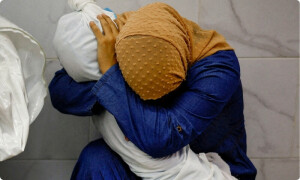THE 2017 census shows that only 0.48 per cent of Pakistanis are persons with disability. Assuming a population of 210 million, this comes to about 1m Pakistanis. Sample-based surveys show that the percentage of Pakistanis with disability is around 12pc or slightly more. This comes to about 25m Pakistanis. There is a massive difference between 1m and 25m people. Planning for a million people is very different from planning for 25m. Numbers matter. Getting accurate numbers matters.
The 2017 census number is clearly a gross understatement. The 1998 census had put the percentage of people with disability at 2.49pc. How is it possible that this percentage has dropped to 0.48pc over the last 20-odd years?
More importantly, most international surveys also show that 10pc to 15pc of the population in most places faces a challenge. Can Pakistan be very different from the global average?
Arriving at reasonable estimates of the incidence of disability is not a straightforward issue. It is not the kind of thing that can be asked simply through a yes-no question. This is why the census figure is such an under-estimate. Carrying out a census is a massive exercise. We cannot have too many questions in the instrument that is used to conduct the census. There is limited time and space to have questions pertaining to disabilities. So the underreporting is not surprising.
More information is required to understand the needs of our differently abled children.
The Annual Status of Education Report, 2018, is the most recent survey that has undertaken comprehensive work on disability and testing issues, and it is worth looking at its data and methods for a number of reasons. Aser has used the full set of the Washington Group’s child functioning module and shown that the module can be effectively deployed in large-scale household surveys. Successful deployment, largely through volunteers, implies that we can do this through surveyors who do not require a long period of training.
Aser has also piloted modules for testing children who are differently abled. Some of these instruments are important for incorporating ‘mainstream’ assessment systems. Currently, public examinations bodies — the Punjab Examination Commission and its counterparts in other provinces, as well as the Boards of Intermediate and Secondary Education — do not offer any significant options for children who are differently abled.
We need better data on differently abled children to figure out the nature of the challenges they face, the level of that challenge, what support is needed, etc, in order to understand what sort of policies should be in place to ensure that differently abled children are in a position to fully develop their potential.
We cannot use the census exercise to get credible numbers for our differently abled population as it requires a much deeper probe and raises a number of questions related to human functioning. But Aser has shown we can incorporate this module in other household surveys. The government of Pakistan, at the federal as well as provincial level, conducts a number of such surveys, and the child functioning module should be embedded in them.
Such embedding of the functioning module in the household surveys that we conduct should not even have been an issue and, in fact, should have been achieved long ago. But it remains an issue because nothing has been done about it. So, how do we plan for 10pc to 15pc of the people if we do not know who they are, where they are and what sort of support they need?
If we think of even the educational needs of differently abled children, think about what is being lost due to the lack of good data. Keeping other factors the same, differently abled children are more likely to be out of school than in schools; they are more likely to drop out earlier; they are more likely to struggle with standardised tests; they are more likely to have trouble finding appropriate employment opportunities. If we do not have data about the incidence of disability, how are we supposed to plan for optimal or even near-optimal support for them?
Similarly, if we lack the appropriate tools for assessing achievement for the differently abled, how can we open up opportunities for them? If we cannot get a good idea of what they learn in schools, what skills they acquire, what potential is present in any child, how do we create pathways, through legal changes, institutional changes, organisational changes and changes in standard operating procedures of various departments to ensure that all children, irrespective of ability differences, are able to reach their full potential? The government has been talking of uniformity in education to ensure equality of opportunity for all children. Do differently abled children not qualify for the same consideration?
These children need health support as well. Their needs in this area might differ from those of other children. How do we gear up for providing these if we do not have the relevant data? If we do not have modules to carry out early identification, how do we move to diagnostic models? In the area of health, we need a lot more than information regarding the incidence of disability of course, but without such information, how do we even trigger other processes?
Better data is a necessary, though not sufficient, input for highlighting the importance of an area as well as policymaking linked to it. Regarding the incidence of disability in children, it is not that we have poor quality data, but that we do not have any credible data to work with. Where the incidence of disability is estimated at 10pc to 15pc, we do not have any details about these children. How are we supposed to do any policymaking and planning? However, instruments for collecting such data are available and have even been piloted in Pakistan. We need to move towards embedding these in our regular data-collection exercises.
Faisal Bari is a senior research fellow at the Institute of Development and Economic Alternatives (IDEAS), and an associate professor of economics at Lums, Lahore.
Sahar Kamran is a senior research associate at IDEAS.
Published in Dawn, October 18th, 2019












































Dear visitor, the comments section is undergoing an overhaul and will return soon.